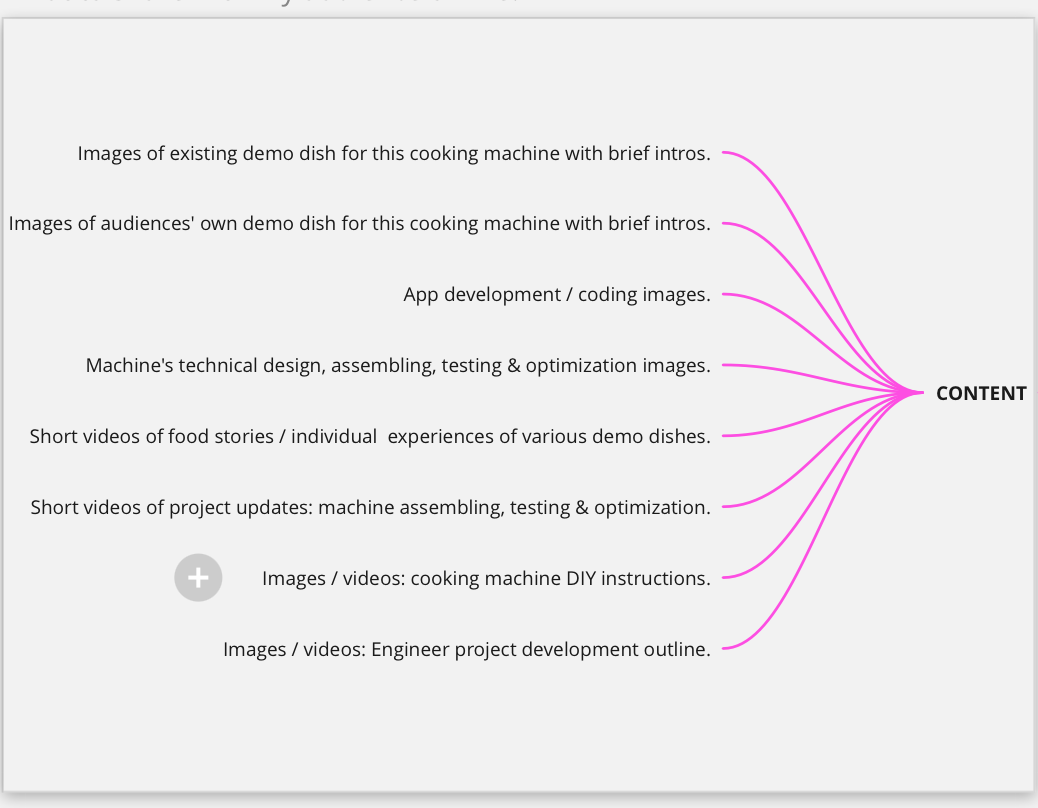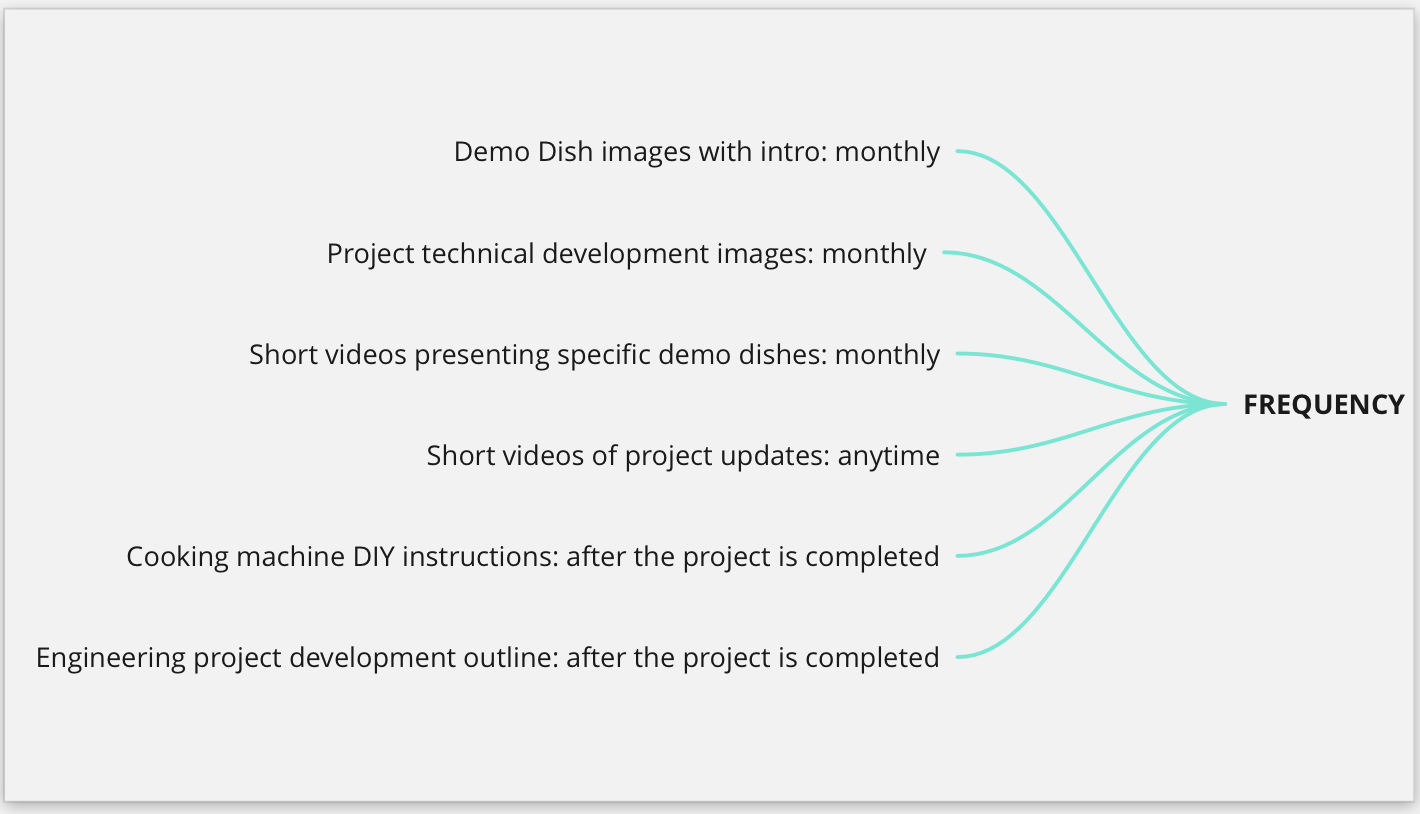A Cooking Machine - Building an Audience for Fundraising
This is the sixth in a series detailing the processes behind the research, design, material selection, fundraising, assembly and programming of a cooking machine. See the column Stories of Food & Tech here.
In this post, I share my fundraising goals for my cooking robot project and explain various approaches to reach these goals. In particular, I talk about how I plan to build an audience through my personal network, a broader local network that includes restaurants, universities’ nutrition departments and maker spaces and social media. I consider this a vital step, as I view my audience (among them project followers & readers) to be one of the most essential parts of fundraising. In addition, I’ll address various questions regarding audience building.
I hope this post can also provide you with some insights into how you can fundraise for your own project, and allow you to have some fun finding and engaging your own audience!
Section one: What are my goals for fundraising?
There are three fundraising goals for this project. First is to raise the minimum amount of money, around $260 dollars, to purchase components for the cooking machine. The second goal is to utilize this opportunity to form a community around this project in order to raise more money for future project development. Lastly, I hope to optimize the cooking machine and potentially build more variations of it based on product testing and user experience.
Section two: How to fundraise?
Overall, I consider there to be three general approaches when it comes to fundraising for a project: 1) selling unused personal items, 2) selling merchandise and 3) finding sponsors to donate money.
The first option, selling unused personal items, is limiting as it only allows me to raise a limited amount of funding. If I have a lot to sell and find the right buyers, the amount raised can potentially be enough for building my first cooking machine. However, this is not a reliable long-term strategy if I want to achieve all three fundraising goals listed above.
In comparison, the second and third options of selling merchandise and finding sponsors are more promising, as these could allow me to raise much more funding. However, in order to go down this path, both approaches require me to build my own audience first and the audience should be as large and targeted as possible for the fundraising campaigns to succeed. Therefore, I talk more about how I can build an audience through different approaches below.
Section three: How to build an audience?
Building an audience is challenging as I must not only know who my audience is, but also how to engage them. The following graph shows my thought process for building an audience, which is further explained by answering four sets of questions listed below.
Q1: Who is my audience (both readers and participants in my project’s development and optimization)?
There are three audience groups.
First, there is my general audience, which I perceive to include a sub-set of four types of readers: 1) those who want to learn to build their own cooking machines so that they can save time for work and other activities, 2) those who want to learn the full process of designing, building and testing an engineering project, 3) those who are interested in learning about the culture and stories behind existing demo dishes or making these dishes themselves and, 4) those who want to share their own demo dishes to be tested on this cooking machine and the cultural and personal stories behind these dishes.
Secondly, there is an audience composed of engineering students who can provide technical support if I run into problems when building the cooking machine, help me test the cooking machine and provide insights into machine improvements and optimization.
Finally, there is an audience composed of chefs and nutritionists who are willing to provide more culturally diverse and nutrient-balanced recipes for this cooking machine.
Q2: Where does my audience come from and why are they important for my fundraising campaign?
First, the audience can come from my own circle of friends and it can grow bigger naturally through my friends’ personal networks. Friends are important because the most likely first group of people to donate. Additionally, they can also help me brainstorm more fundraising ideas as well as supporting my fundraising social events to help me build up a crowd and push the momentum of a fundraising campaign further.
Second, the audience that includes chefs and nutritionists can come from local restaurants and universities. Local restaurants are particularly important because they can help spread the word of my project in the local food communities so that my project documented on social media can gain more exposure, thus raising more funding.
Third, my audience can come from people I get connected with through social events in my community and local organizations, as well as engineers from local hobby shops and makerspaces. The participants from these local channels are important because they can participate in more in-person events and become my biggest donors during in-person fundraising events. If they are also engineers, they can help me with technical challenges. Moreover, they can introduce me to their own network and help me establish a solid foundation in the local community.
Last but not least, the audience can come from online users, who I unfortunately have no access to unless I develop online crowdfunding and a social media presence. Instagram, for instance, has many functions, such as hashtags and influencers’ network, that are already in place to help users expand audience exponentially. Crowdsourcing applications also have a particular fan base that is solely there for fundraising. In fact, an online audience is likely to be my major audience in the long run since it will be much larger than my personal or local network. Therefore, future virtual fundraising events will likely be the most important part of my fundraising campaigns.
Q3: What social media platform is best for my audience and why?
Instagram allows me to post compelling images and videos and engage with my audience through storytelling. Therefore, it’s the best platform for my audience at the moment. For instance, I can ask my audience questions or take them to the scenes of me working on the machine assembling and testing process. My audience will be able to see the project progress, the impact of their support and enjoy some fun stories behind these demo dishes.
In the long run, I do want to explore different social media platforms, such as Facebook, Twitter, TikTok and etc. Facebook is useful since I can attach donation links, which would allow me to post longer text-based articles directly. Twitter shares up-to-date local news and events and is one of the best platforms for fundraising campaigns and events. Tik Tok allows me to post fun and creative short videos and has recently become one of the best platforms to fundraise. For instance, I can post my project updates, demo dish testing on the cooking machine and etc., to draw attention of the new audience more easily.
Q4: What information do I share with my audience, and how often do I share them?
There are eight categories of content that I will share with my audience, each shared at different frequencies.


Fundraising is an important goal for my project, but it is not the only goal. I also want to add value for my audience. For instance, I hope my audience enjoys learning about various cultures, dishes and technologies through engaging in the content created for my project. At the end of the day, I hope to make a small positive impact on my audience’s daily cooking and eating journey.
For the next post, I’ll share some food stories and my journey of building an audience. I’ll also update you on the latest technical progress and start engaging in some of my audiences through social media. Stay tuned :)




